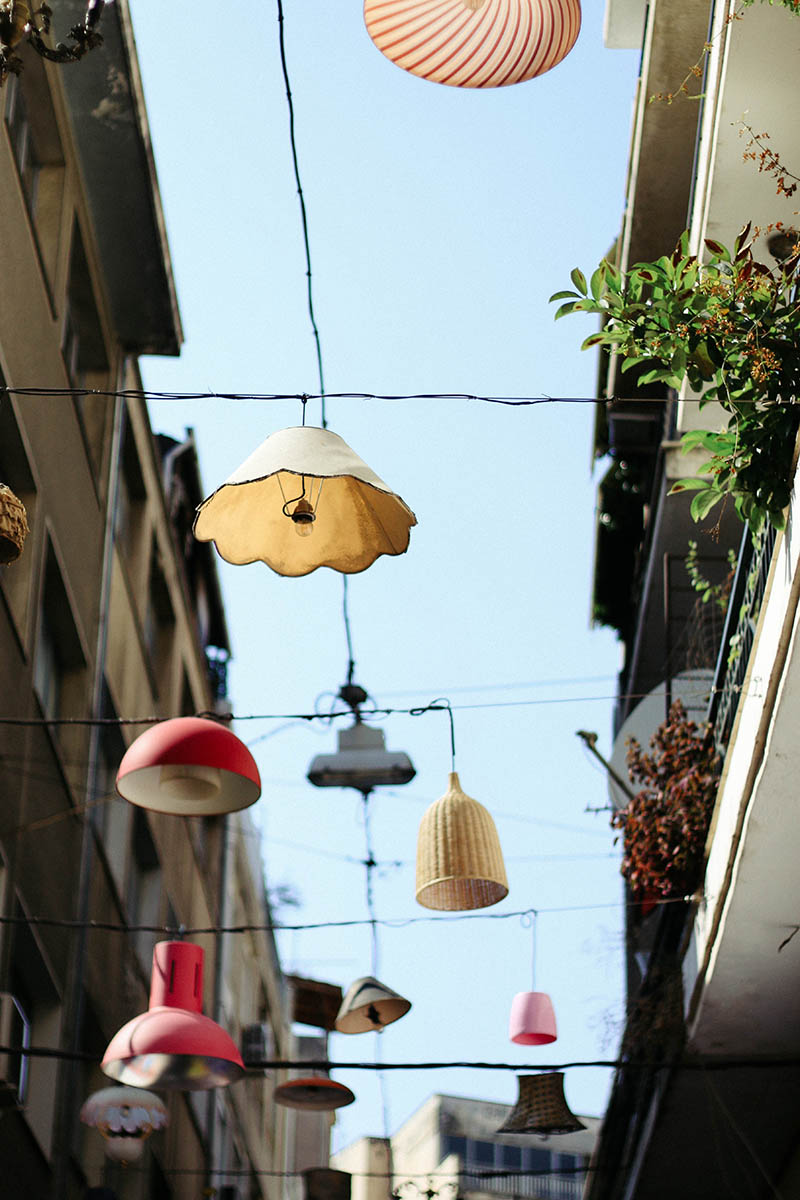
Athens is the capital and largest city of Greece. Athens dominates the Attica region and is one of the world’s oldest cities, with its recorded history spanning over 3,400 years and its earliest human presence started somewhere between the 11th and 7th millennium BC. Classical Athens was a powerful city-state. It was a center for the arts, learning and philosophy, and the home of Plato’s Academy and Aristotle’s Lyceum. It is widely referred to as the cradle of Western civilization and the birthplace of democracy, largely because of its cultural and political impact on the European continent—particularly Ancient Rome.
In modern times, Athens is a large cosmopolitan metropolis and central to economic, financial, industrial, maritime, political and cultural life in Greece. In 2021, Athens’ urban area hosted more than three and a half million people, which is around 35% of the entire population of Greece.
The heritage of the classical era is still evident in the city, represented by ancient monuments and works of art, the most famous of all being the Parthenon, considered a key landmark of early Western civilization. The city also retains Roman and Byzantine monuments, as well as a smaller number of Ottoman monuments, while its historical urban core features elements of continuity through its millennia of history. Athens is home to two UNESCO World Heritage Sites, the Acropolis of Athens and the medieval Daphni Monastery. Landmarks of the modern era, dating back to the establishment of Athens as the capital of the independent Greek state in 1834, include the Hellenic Parliament and the so-called “architectural trilogy of Athens”, consisting of the National Library of Greece, the National and Kapodistrian University of Athens and the Academy of Athens. Athens is also home to several museums and cultural institutions, such as the National Archeological Museum, featuring the world’s largest collection of ancient Greek antiquities, the Acropolis Museum, the Museum of Cycladic Art, the Benaki Museum and the Byzantine and Christian Museum. Athens was the host city of the first modern-day Olympic Games in 1896, and 108 years later it hosted the 2004 Summer Olympics, making it one of the few cities to have hosted the Olympics more than once.
Classic destination!
Athens has been a destination for travellers since antiquity. Over the past decade, the city’s infrastructure and social amenities have improved, in part because of its successful bid to stage the 2004 Olympic Games.
The Greek Government, aided by the EU, has funded major infrastructure projects such as the state-of-the-art Eleftherios Venizelos International Airport, the expansion of the Athens Metro system, and the new Attiki Odos Motorway.
The city was voted as the third best European city to visit in 2015 by European Best Destination. More than 240,000 people voted.


It is home to 148 theatrical stages, more than any other city in the world, including the ancient Odeon of Herodes Atticus, home to the Athens Festival, which runs from May to October each year. In addition to a large number of multiplexes, Athens plays host to open air garden cinemas. The city also supports music venues, including the Athens Concert Hall (Megaro Moussikis), which attracts world class artists. The Athens Planetarium, located in Andrea Syngrou Avenue, in Palaio Faliro is one of the largest and best equipped digital planetaria in the world. The Stavros Niarchos Foundation Cultural Center, inaugurated in 2016, will house the National Library of Greece and the Greek National Opera.
Restaurants, tavernas and bars can be found in the entertainment hubs in Plaka and the Trigono areas of the historic centre, the inner suburbs of Gazi and Psyrri are especially busy with nightclubs and bars, while Kolonaki, Exarchia, Metaxourgeio, Koukaki and Pangrati have more of a cafe and restaurant scene. The coastal suburbs of Microlimano, Alimos and Glyfada have tavernas, beach bars and busy summer clubs.
Explore Athens!
The Municipality of Athens, the City Centre of the Athens Urban Area, is divided into several districts: Omonoia, Syntagma, Exarcheia, Agios Nikolaos, Neapolis, Lykavittos, Lofos Strefi, Lofos Finopoulou, Lofos Filopappou, Pedion Areos, Metaxourgeio, Aghios Kostantinos, Larissa Station, Kerameikos, Psiri, Monastiraki, Gazi, Thission, Kapnikarea, Aghia Irini, Aerides, Anafiotika, Plaka, Acropolis, Pnyka, Makrygianni, Lofos Ardittou, Zappeion, Aghios Spyridon, Pangrati, Kolonaki, Dexameni, Evaggelismos, Gouva, Aghios Ioannis, Neos Kosmos, Koukaki, Kynosargous, Fix, Ano Petralona, Kato Petralona, Rouf, Votanikos, Profitis Daniil, Akadimia Platonos, Kolonos, Kolokynthou, Attikis Square, Lofos Skouze, Sepolia, Kypseli, Aghios Meletios, Nea Kypseli, Gyzi, Polygono, Ampelokipoi, Panormou-Gerokomeio, Pentagono, Ellinorosson, Nea Filothei, Ano Kypseli, Tourkovounia-Lofos Patatsou, Lofos Elikonos, Koliatsou, Thymarakia, Kato Patisia, Treis Gefyres, Aghios Eleftherios, Ano Patisia, Kypriadou, Menidi, Prompona, Aghios Panteleimonas, Pangrati, Goudi, Vyronas and Ilisia.
Omonoia, Omonoia Square is the oldest square in Athens. It is surrounded by hotels and fast food outlets, and contains a metro station, named Omonia station. The square is the focus for celebration of sporting victories, as seen after the country’s winning of the Euro 2004 and the EuroBasket 2005 tournaments.


Metaxourgeio is a neighborhood of Athens. The neighborhood is located north of the historical centre of Athens, between Kolonos to the east and Kerameikos to the west, and north of Gazi. Metaxourgeio is frequently described as a transition neighborhood. After a long period of abandonment in the late 20th century, the area is acquiring a reputation as an artistic and fashionable neighborhood following the opening of art galleries, museums, restaurants and cafés. Local efforts to beautify and invigorate the neighborhood have reinforced a sense of community and artistic expression. Anonymous art pieces containing quotes and statements in both English and Ancient Greek have sprung up throughout the neighborhood, bearing statements such as “Art for art’s sake”. Guerrilla gardening has also helped to beautify the area.
Psiri – The reviving Psiri neighbourhood – also known as Athens’s “meat packing district” – is dotted with renovated former mansions, artists’ spaces, and small gallery areas. A number of its renovated buildings also host fashionable bars, making it a hotspot for the city in the last decade, while live music restaurants known as “rebetadika”, after rebetiko, a unique form of music that blossomed in Syros and Athens from the 1920s until the 1960s, are to be found. Rebetiko is admired by many, and as a result rebetadika are often crammed with people of all ages who will sing, dance and drink till dawn.
The Gazi area, one of the latest in full redevelopment, is located around a historic gas factory, now converted into the Technopolis cultural multiplex, and also includes artists’ areas, small clubs, bars and restaurants, as well as Athens’s “Gay village”. The metro’s expansion to the western suburbs of the city has brought easier access to the area since spring 2007, as the line 3 now stops at Gazi (Kerameikos station).
Syntagma, Syntagma Square, is the capital’s central and largest square, lying adjacent to the Greek Parliament (the former Royal Palace) and the city’s most notable hotels. Ermou Street, an approximately one-kilometre-long (5⁄8-mile) pedestrian road connecting Syntagma Square to Monastiraki, is a consumer paradise for both Athenians and tourists. Complete with fashion shops and shopping centres promoting most international brands, it now finds itself in the top five most expensive shopping streets in Europe, and the tenth most expensive retail street in the world.
Plaka, Monastiraki, and Thission – Plaka, lying just beneath the Acropolis, is famous for its plentiful neoclassical architecture, making up one of the most scenic districts of the city. It remains a prime tourist destination with tavernas, live performances and street salesmen. Nearby Monastiraki, for its part, is known for its string of small shops and markets, as well as its crowded flea market and tavernas specialising in souvlaki.
Another district known for its student-crammed, stylish cafés is Theseum or Thission, lying just west of Monastiraki. Thission is home to the ancient Temple of Hephaestus, standing atop a small hill. This area also has a picturesque 11th-century Byzantine church, as well as a 15th-century Ottoman mosque.
Exarcheia, located north of Kolonaki, often regarded as the city’s anarchist scene and as a student quarter with cafés, bars and bookshops. Exarcheia is home to the Athens Polytechnic and the National Archaeological Museum; it also contains important buildings of several 20th-century styles: Neoclassicism, Art Deco and Early Modernism (including Bauhaus influences).


